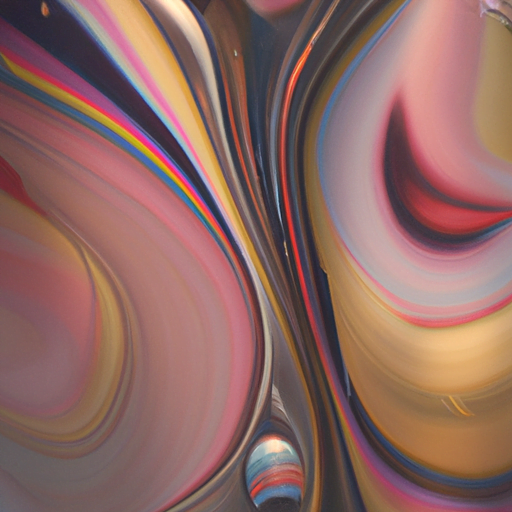
-
Table of Contents
- The Beauty of Fluid and Organic Shapes in Artwork
- The Significance of Fluid and Organic Shapes
- The Impact on the Viewer
- Examples of Fluid and Organic Shapes in Artwork
- 1. Henri Matisse – “The Dance”
- 2. Antoni Gaudí – Sagrada Família
- 3. Jackson Pollock – Drip Paintings
- The Psychological Impact of Fluid and Organic Shapes
- Conclusion
The Beauty of Fluid and Organic Shapes in Artwork

Art has always been a medium for self-expression and creativity. Artists throughout history have experimented with various techniques and styles to convey their ideas and emotions. One such style that has captivated audiences for centuries is the use of fluid and organic shapes in artwork. These shapes, characterized by their flowing and natural forms, bring a sense of harmony and beauty to the visual composition. In this article, we will explore the allure of fluid and organic shapes in artwork, their significance, and their impact on the viewer.
The Significance of Fluid and Organic Shapes
Fluid and organic shapes are derived from nature and the world around us. They represent the irregular and asymmetrical forms found in natural objects such as plants, animals, and bodies of water. Unlike geometric shapes, which are precise and rigid, fluid and organic shapes have a sense of movement and life. They evoke a feeling of freedom and spontaneity, allowing the artist to express their emotions and ideas in a more intuitive and unrestricted manner.
These shapes have been used in art throughout history, from ancient cave paintings to contemporary abstract art. They can be found in various art forms, including painting, sculpture, and even architecture. Artists have been drawn to these shapes because they offer a departure from the constraints of reality and allow for a more imaginative and subjective interpretation of the world.
The Impact on the Viewer
The use of fluid and organic shapes in artwork has a profound impact on the viewer. These shapes have a way of captivating our attention and drawing us into the artwork. They create a sense of movement and energy, making the artwork come alive. When we look at a painting or sculpture with fluid and organic shapes, we are transported into a world of imagination and emotion.
One of the reasons these shapes have such a powerful impact is their ability to evoke a sense of familiarity. As humans, we are surrounded by organic shapes in our everyday lives. From the curves of our bodies to the shapes of the natural world, these forms are deeply ingrained in our subconscious. When we encounter them in artwork, they resonate with us on a primal level, creating a connection between the viewer and the artwork.
Furthermore, fluid and organic shapes have a calming and soothing effect on the viewer. The flowing lines and gentle curves create a sense of harmony and balance. They invite us to relax and let go of our worries, allowing us to experience a moment of tranquility and peace. This is particularly evident in artworks that depict natural scenes, such as landscapes or seascapes, where the use of fluid and organic shapes enhances the sense of serenity and beauty.
Examples of Fluid and Organic Shapes in Artwork
Throughout history, artists have embraced fluid and organic shapes in their work. Let’s explore some notable examples:
1. Henri Matisse – “The Dance”
In his famous painting “The Dance,” Henri Matisse uses fluid and organic shapes to depict a group of dancers. The figures are intertwined, their bodies flowing seamlessly into one another. The use of fluid shapes creates a sense of movement and rhythm, capturing the energy and joy of the dance.
2. Antoni Gaudí – Sagrada Família
The Sagrada Família, a masterpiece of architecture by Antoni Gaudí, is known for its organic shapes and intricate details. The building’s façade features flowing lines and curves inspired by natural forms, such as tree branches and seashells. The use of fluid shapes in the design creates a sense of harmony and unity with the surrounding environment.
3. Jackson Pollock – Drip Paintings
Jackson Pollock’s drip paintings are a prime example of the expressive power of fluid shapes. By dripping and pouring paint onto the canvas, Pollock created intricate webs of lines and shapes. The resulting artworks are dynamic and energetic, capturing the spontaneity and freedom of the artistic process.
The Psychological Impact of Fluid and Organic Shapes
Research has shown that fluid and organic shapes have a positive psychological impact on individuals. They have been found to reduce stress and anxiety, promote relaxation, and enhance overall well-being. The flowing lines and curves of these shapes have a soothing effect on the brain, triggering a sense of calm and tranquility.
Furthermore, fluid and organic shapes have been found to stimulate creativity and imagination. When we encounter these shapes, our brains are prompted to think outside the box and explore new possibilities. They inspire us to see the world from a different perspective and encourage us to embrace our own unique creativity.
Conclusion
The beauty of fluid and organic shapes in artwork lies in their ability to evoke emotion, captivate the viewer, and create a sense of harmony and balance. These shapes, derived from nature, offer a departure from the constraints of reality and allow for a more imaginative and subjective interpretation of the world. Whether it’s a painting, sculpture, or architectural design, the use of fluid and organic shapes adds depth and meaning to the artwork, inviting us to explore our own emotions and connect with the artist’s vision.
